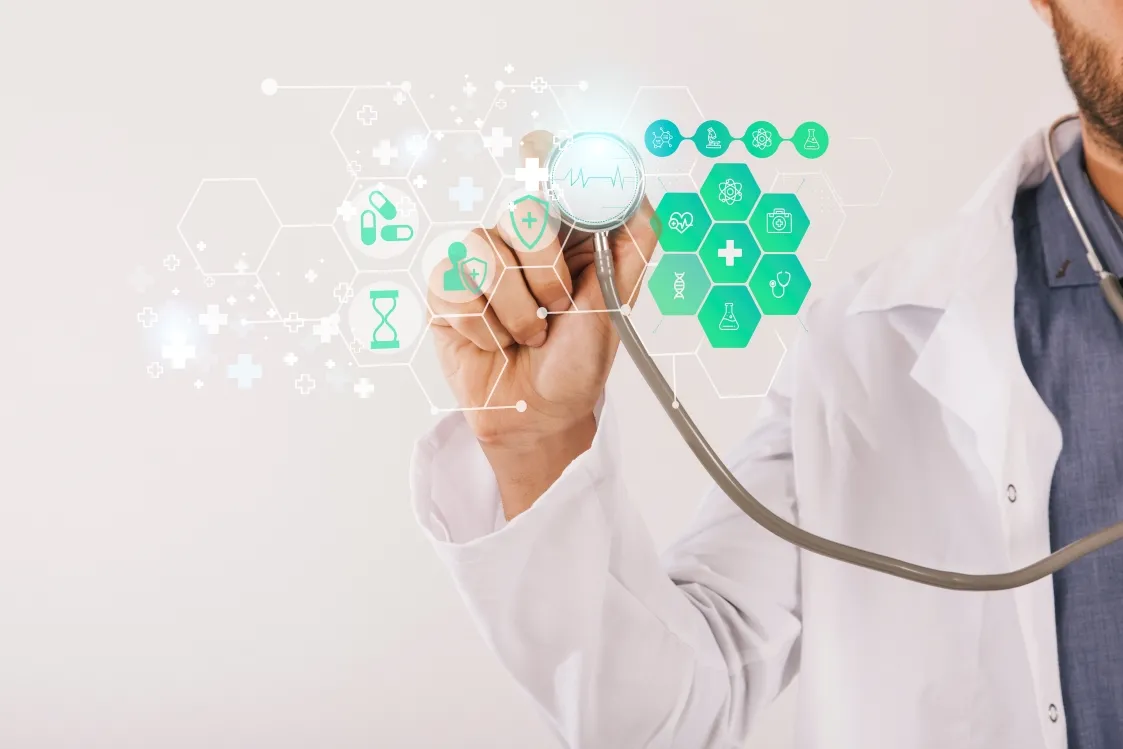PNH and aHUS Market 2025: A Comprehensive Analysis of Emerging Opportunities and Challenges
Paroxysmal nocturnal hemoglobinuria (PNH) and atypical hemolytic uremic syndrome (aHUS) are rare, life-threatening disorders characterized by complement system dysregulation. Both conditions involve complex clinical challenges and require advanced therapeutic strategies. As we approach 2025, the PNH and aHUS market is witnessing significant growth driven by scientific innovation, improved diagnostics, and expanding patient awareness. This article explores the current landscape, key market drivers, innovations, regional dynamics, and strategic considerations shaping the future of this critical healthcare segment.
PNH is a hematologic disorder involving the destruction of red blood cells due to complement-mediated hemolysis, often leading to anemia, fatigue, and increased risk of thrombosis. In contrast, aHUS is a rare kidney-related condition characterized by abnormal complement activation, causing thrombotic microangiopathy and multi-organ damage. Although distinct, both diseases share a common pathological mechanism centered on complement system overactivation, making complement inhibitors the cornerstone of treatment.
Accurate diagnosis and early intervention are vital to managing disease progression and preventing severe complications, highlighting the need for heightened clinical awareness and diagnostic advancements.
Market Drivers Fueling Growth
The PNH and aHUS market growth is propelled by several key factors:
- Enhanced Diagnostic Capabilities: Advances in diagnostic technology and increased clinician awareness have improved early detection rates, enabling timely initiation of targeted therapies.
- Rise of Complement Inhibitors: The introduction and adoption of complement-targeted drugs have transformed patient outcomes by reducing hemolysis, preventing organ damage, and minimizing life-threatening events.
- Personalized Treatment Approaches: Tailoring therapies based on genetic and clinical profiles ensures higher efficacy and safety, driving demand for precision medicine solutions.
- Regulatory Support and Orphan Drug Incentives: Favorable regulatory pathways and incentives for rare disease drug development accelerate innovation and market entry.
- Growing Patient Awareness and Advocacy: Increasing educational efforts have empowered patients, leading to earlier diagnosis and better adherence to treatment protocols.
Innovation: Pioneering Next-Generation Therapies
Innovation stands at the heart of the PNH and aHUS therapeutic landscape:
- Novel Complement Inhibitors: Newer agents, including oral small molecules and bi-specific antibodies, offer improved patient convenience and enhanced targeting of the complement cascade.
- Gene and RNA Therapies: Cutting-edge gene editing and RNA interference approaches promise potential curative treatments by correcting underlying genetic defects or modulating complement activity.
- Advanced Diagnostics and Biomarkers: Integration of companion diagnostics facilitates personalized medicine, optimizing therapy selection and monitoring response.
- Digital Health and Remote Monitoring: Telemedicine platforms and wearable devices enable real-time patient monitoring, enhancing disease management and adherence.
- Sustainable Drug Delivery Systems: Development of patient-friendly formulations and packaging improves accessibility and compliance.
Regional Market Dynamics: Global Trends and Opportunities
The PNH and aHUS market exhibits varied growth patterns across regions, influenced by healthcare infrastructure and economic factors:
- North America: Leading the market due to advanced healthcare facilities, strong clinical research ecosystems, and early adoption of innovative therapies.
- Europe: Characterized by supportive regulatory frameworks, robust rare disease networks, and increasing patient advocacy fueling steady growth.
- Asia-Pacific: Rapidly expanding market driven by improving healthcare access, rising disease awareness, and growing pharmaceutical manufacturing capacity.
- Emerging Markets: Latin America, the Middle East, and Africa show gradual uptake, with improving healthcare policies and international collaborations supporting market development.
Strategic Considerations for Market Players
Success in the PNH and aHUS market requires a multifaceted strategic approach:
- Investment in R&D: Continuous innovation is crucial to develop next-generation therapies that improve efficacy, safety, and patient convenience.
- Strengthening Diagnostic and Patient Support: Collaborations with diagnostic firms and patient organizations can enhance early diagnosis and treatment adherence.
- Navigating Regulatory Landscapes: Staying aligned with evolving regulations and leveraging orphan drug incentives expedite market access.
- Educating Healthcare Professionals and Patients: Targeted awareness campaigns promote early recognition and acceptance of novel therapies.
- Adopting Value-Based Pricing Models: Addressing affordability through innovative pricing and access programs ensures broader market penetration, especially in emerging regions.
Conclusion: The Path Forward for PNH and aHUS Therapeutics
The PNH and aHUS market by 2025 is set to experience robust growth, driven by technological innovation, evolving treatment paradigms, and expanding patient access. As complement-targeted therapies become increasingly sophisticated and personalized, patients benefit from improved survival rates and enhanced quality of life.
For healthcare market research stakeholders, understanding these dynamic factors is key to identifying growth opportunities and crafting strategies that align with evolving clinical needs and regulatory environments. By embracing innovation, regional insights, and patient-centric approaches, market players can unlock the full potential of this niche but vital segment in rare disease therapeutics.
NOTE:
Quants and Trends is proud to offer an extensive portfolio of meticulously researched healthcare market reports, numbering in the thousands. We also provide tailored customization services to ensure our insights align precisely with your strategic objectives and informational needs. For personalized assistance or to discuss your specific requirements, we invite you to get in touch with our team. We also encourage you to request a complimentary sample PDF report. Please visit our Sample Request Page to receive yours today.
Key Market Players
Alexion Pharmaceuticals
Alnylam Pharmaceuticals
Omeros Corporation
Segmentation By Type
Soliris
Ultomiris
Segmentation By Application
PNH
aHUS
Segmentation By Region
North America (United States, Canada, and Mexico)
Europe (Germany, France, UK, Russia, Italy, and Rest of Europe)
Asia-Pacific (China, Japan, South Korea, India, Southeast Asia, Australia and Rest of Asia-Pacific)
South America (Brazil, Argentina and Rest of South America)
Middle East & Africa (Turkey, Saudi Arabia, UAE, Rest of Middle East & Africa)
Market SWOT Analysis
What are the strengths of the PNH and aHUS market in 2025?
The PNH and aHUS market in 2025 will benefit from the increasing number of treatment options, including innovative complement inhibitors, and advanced diagnostic tools. These therapies are improving patient outcomes and expanding the market's growth potential. Additionally, rising awareness and early diagnosis are likely to support improved treatment efficacy and patient adherence.
What are the weaknesses of the PNH and aHUS market in 2025?
One key weakness is the high cost of treatment for both conditions, which limits access to therapies for many patients, especially in low-income regions. Additionally, there may be concerns around the long-term safety and efficacy of newer therapies, which could impact patient trust and market growth. The complexity of managing these rare diseases may also contribute to delayed diagnoses.
What opportunities exist in the PNH and aHUS market in 2025?
There are several opportunities, including the potential for expanded indications for existing therapies, personalized medicine approaches, and the development of more affordable treatment options. There is also a growing opportunity in emerging markets, where healthcare infrastructure is improving, and awareness about rare diseases is increasing. Furthermore, innovations in gene therapies could provide new long-term solutions.
What are the threats to the PNH and aHUS market in 2025?
Threats include the possibility of regulatory challenges or changes that could delay approval for new therapies. Patent expirations could also lead to generic competition, reducing the profitability of current treatments. Additionally, economic downturns or shifts in healthcare policies may lead to reduced funding for rare disease treatments, potentially limiting market growth.
Market PESTEL Analysis
How do political factors impact the PNH and aHUS market in 2025?
Political factors, such as healthcare policy changes and government funding for rare diseases, can significantly impact the PNH and aHUS market. Countries with robust healthcare systems may offer greater reimbursement opportunities, while regions with less support for rare diseases could see slower market growth. Changes in regulatory frameworks could also affect drug approval processes and pricing.
How do economic factors influence the PNH and aHUS market in 2025?
Economic factors like healthcare expenditure and GDP growth can affect the affordability and accessibility of treatments for PNH and aHUS. High treatment costs may pose a barrier in lower-income regions, limiting patient access. However, in wealthier economies, a higher focus on rare diseases and more funding may drive market expansion.
How do social factors shape the PNH and aHUS market in 2025?
Social factors such as patient awareness and education about PNH and aHUS can greatly influence the market. As awareness increases, early diagnosis and treatment adherence improve, leading to better health outcomes and higher demand for therapies. Additionally, patient advocacy groups and community support can help raise visibility and influence healthcare policies.
How do technological factors affect the PNH and aHUS market in 2025?
Technological advancements in genetic testing, diagnostics, and treatment options are transforming the PNH and aHUS market. Innovative therapies, such as gene therapy and complement inhibitors, offer potential breakthroughs for treating these rare diseases. Moreover, digital health tools can improve monitoring and management of patients, leading to better clinical outcomes.
How do environmental factors play a role in the PNH and aHUS market in 2025?
Environmental factors, such as the availability of healthcare infrastructure and the global distribution of resources, impact the PNH and aHUS market. In areas with limited healthcare access, treatment uptake may be slower. Climate change or pandemics can also affect healthcare systems, potentially diverting attention away from rare diseases like PNH and aHUS.
How do legal factors affect the PNH and aHUS market in 2025?
Legal factors, including intellectual property laws, patent expirations, and regulatory approvals, play a crucial role in shaping the PNH and aHUS market. Patent expirations of key treatments can lead to the entry of generics, which may reduce the market share of branded drugs. Additionally, varying regulatory standards across countries can impact the speed and availability of new therapies.
Market SIPOC Analysis
Who are the suppliers in the PNH and aHUS market in 2025?
Suppliers in the PNH and aHUS market include pharmaceutical companies that develop and manufacture therapies for these rare diseases, such as complement inhibitors and gene therapies. Other suppliers include diagnostic tool manufacturers, medical equipment providers, and research organizations contributing to advancements in treatment options.
What inputs are needed for the PNH and aHUS market in 2025?
Key inputs for the PNH and aHUS market include ongoing research and clinical trials, funding for drug development, regulatory approval processes, and advanced diagnostics for accurate disease identification. Skilled healthcare professionals and patient data are also critical for understanding disease progression and treatment outcomes.
What processes are involved in the PNH and aHUS market in 2025?
The processes in the PNH and aHUS market involve drug discovery and development, clinical trials, regulatory submissions for approval, marketing and distribution of approved therapies, and patient management through healthcare professionals. Patient education, early diagnosis, and continuous monitoring are also vital processes in improving outcomes.
Who are the customers in the PNH and aHUS market in 2025?
The customers in this market include healthcare providers such as hospitals, clinics, and specialists who treat PNH and aHUS patients. Additionally, patients and their families are end customers, relying on treatments and support to manage these conditions. Pharmaceutical distributors and payers, such as insurance companies and government healthcare systems, are also key customers.
What outputs are produced in the PNH and aHUS market in 2025?
The outputs of the PNH and aHUS market include innovative therapies, such as biologics and gene therapies, that target the underlying mechanisms of these diseases. Diagnostic tools and patient support programs are also key outputs, along with improved patient outcomes and long-term management of these rare conditions. Additionally, market growth and expanded access to treatments are expected outputs.
Market Porter's Five Forces
How does the threat of new entrants impact the PNH and aHUS market in 2025?
The threat of new entrants in the PNH and aHUS market is relatively low due to the high barriers to entry. Developing treatments for rare diseases requires significant research and development investments, regulatory approvals, and specialized expertise. However, advancements in biotechnology and increasing interest in gene therapies could encourage new players to enter the market.
How does the bargaining power of suppliers affect the PNH and aHUS market in 2025?
The bargaining power of suppliers is moderate in the PNH and aHUS market. Key suppliers are pharmaceutical companies that produce life-saving biologics and diagnostic tools, but there are limited suppliers for certain innovative therapies. The reliance on a few key suppliers for advanced treatments may give them some power, especially when patent-protected therapies are involved.
How does the bargaining power of buyers impact the PNH and aHUS market in 2025?
The bargaining power of buyers is relatively low in the PNH and aHUS market, as there are few treatment options available, and patients have limited choices. However, larger buyers like healthcare systems and insurance companies may exert some influence on pricing and reimbursement decisions. The high cost of treatments can also shift the power towards buyers looking to negotiate better terms.
How does the threat of substitute products impact the PNH and aHUS market in 2025?
The threat of substitute products is low in the PNH and aHUS market. These are rare, complex diseases with limited effective treatments. While some therapies are being developed, there are currently no direct substitutes for the existing drugs that target specific disease mechanisms. However, emerging technologies like gene therapy or alternative biological agents could pose a threat in the future.
How does industry rivalry affect the PNH and aHUS market in 2025?
Industry rivalry is moderate in the PNH and aHUS market, as there are a few key players dominating the space with limited competition. While the market for rare disease treatments is growing, the niche nature of PNH and aHUS limits the number of competitors. However, ongoing innovation, patent expirations, and the development of new therapies could intensify rivalry among existing players.
Market Upstream Analysis
What are the key raw materials and components involved in the PNH and aHUS market in 2025?
The key raw materials and components in the PNH and aHUS market include biologic compounds used in drug production, such as monoclonal antibodies and complement inhibitors. Additionally, advanced diagnostic technologies, including genetic testing tools, play a critical role. Research and development materials for clinical trials are also essential upstream components.
What role do research and development (R&D) processes play in the PNH and aHUS market in 2025?
R&D processes are crucial for the development of new therapies and treatments for PNH and aHUS. The discovery of innovative biologics, gene therapies, and alternative treatment mechanisms relies heavily on R&D investment. As both diseases are rare and complex, continuous scientific research is necessary to uncover new therapeutic targets and improve patient outcomes.
What are the challenges faced by suppliers in the upstream PNH and aHUS market in 2025?
Suppliers in the upstream PNH and aHUS market face challenges such as the high costs associated with the production of biologic therapies, long development timelines, and strict regulatory requirements. Additionally, sourcing rare raw materials for innovative drugs can be difficult, and the complexity of manufacturing highly specialized treatments adds to the operational challenges.
How does regulatory approval affect the upstream process in the PNH and aHUS market in 2025?
Regulatory approval is a significant factor in the upstream process, as new treatments for PNH and aHUS must undergo rigorous trials and meet specific standards set by authorities like the FDA and EMA. Delays in approval can hinder market entry, impacting suppliers and manufacturers. Regulatory requirements for both safety and efficacy also drive the cost and duration of product development.
What impact does competition among suppliers have on the upstream PNH and aHUS market in 2025?
Competition among suppliers in the upstream PNH and aHUS market remains limited, as only a few pharmaceutical companies dominate the field. However, as new therapies are developed and the market grows, competition could increase. The entry of new players, particularly in gene therapy and novel biologics, could drive innovation and lower production costs, benefiting the overall supply chain.
How do partnerships and collaborations influence the upstream PNH and aHUS market in 2025?
Partnerships and collaborations are critical in the upstream PNH and aHUS market, as they enable companies to share resources, knowledge, and expertise in developing treatments. Collaborations between pharmaceutical companies, research institutions, and diagnostic firms help accelerate the development and commercialization of new therapies. These partnerships can also help manage costs and regulatory hurdles, improving the efficiency of the supply chain.
Market Midstream Analysis
What role do manufacturing processes play in the PNH and aHUS market in 2025?
Manufacturing processes in the PNH and aHUS market are critical, especially given the complexity of biologic treatments and the need for precise, high-quality production standards. Biopharmaceutical companies must use advanced manufacturing techniques to ensure the efficacy, safety, and consistency of treatments. With the growing demand for specialized therapies, efficient and scalable production methods are key to meeting market needs.
How do distribution networks impact the PNH and aHUS market in 2025?
Distribution networks are vital to ensuring that life-saving treatments for PNH and aHUS reach healthcare providers and patients efficiently. These networks must navigate logistics challenges, such as temperature-sensitive biologics, and ensure that drugs are delivered promptly. Strong relationships with healthcare providers, pharmaceutical wholesalers, and insurance companies help optimize the availability of therapies globally.
What challenges do companies face in the midstream PNH and aHUS market in 2025?
One of the main challenges in the midstream PNH and aHUS market is managing the complexity and cost of producing biologic treatments at scale. Additionally, regulatory compliance across different regions can complicate distribution strategies. The high cost of therapies may also result in delayed or limited access in certain markets, requiring companies to work closely with payers and healthcare systems to ensure accessibility.
How does patient access to treatment influence the midstream PNH and aHUS market in 2025?
Patient access to treatment is a major consideration in the midstream market, especially in areas where healthcare infrastructure is less developed or reimbursement policies are restrictive. Companies must collaborate with healthcare systems and insurance providers to improve access to expensive treatments. Furthermore, patient assistance programs are becoming increasingly important to ensure that patients who need these therapies can afford them.
How do healthcare partnerships and collaborations affect the midstream PNH and aHUS market in 2025?
Healthcare partnerships and collaborations significantly influence the midstream PNH and aHUS market by fostering effective distribution strategies and improving patient access. Pharmaceutical companies, hospitals, and insurance companies must work together to streamline access to treatments, manage costs, and navigate regulatory requirements. Collaborations between research institutions and drug manufacturers can also lead to the faster commercialization of new treatments.
What is the impact of market regulations on the midstream PNH and aHUS market in 2025?
Market regulations in the midstream PNH and aHUS market play a crucial role in shaping distribution practices and ensuring patient safety. Regulatory agencies enforce standards for the storage, transportation, and sale of biologic treatments. Any changes in regulations, such as stricter requirements for safety or pricing controls, can impact the cost structure and availability of therapies.
Market Downstream Analysis
How do healthcare providers impact the downstream PNH and aHUS market in 2025?
Healthcare providers, such as hospitals, specialists, and clinics, are key players in the downstream market. They are responsible for diagnosing PNH and aHUS, prescribing appropriate treatments, and managing patient care. The ability of healthcare providers to stay updated on new therapies and manage treatment protocols will directly influence patient outcomes and the uptake of new treatments.
How does patient access to treatment affect the downstream PNH and aHUS market in 2025?
Patient access to treatment is a critical factor in the downstream market. The cost of therapies, insurance coverage, and availability of medications significantly influence whether patients receive timely treatment. The effectiveness of patient assistance programs and healthcare policies that ensure broader access will play a major role in the market’s growth and overall impact.
How does the role of insurance companies influence the downstream PNH and aHUS market in 2025?
Insurance companies play a significant role in determining patient access to treatments. The reimbursement policies and coverage options for PNH and aHUS therapies will impact treatment affordability for patients. Insurers that offer better coverage for these rare diseases can improve market penetration, while restrictions or high co-pays may limit access, especially in emerging markets.
How does patient education and awareness affect the downstream PNH and aHUS market in 2025?
Patient education and awareness are essential in the downstream market, as they can lead to earlier diagnosis and better management of PNH and aHUS. When patients are aware of available treatments and the importance of adherence to therapy regimens, they are more likely to seek out medical help and stick to prescribed treatments. This can drive demand for therapies and improve treatment outcomes.
How does market competition among drug manufacturers influence the downstream PNH and aHUS market in 2025?
Market competition among drug manufacturers can have a positive impact on the downstream PNH and aHUS market by driving innovation and potentially lowering treatment costs. As new players enter the market or existing companies introduce more affordable alternatives, healthcare providers and patients will have more choices. This competition could improve access to medications and benefit overall treatment options for both diseases.
How do regulatory policies and approvals impact the downstream PNH and aHUS market in 2025?
Regulatory policies and approvals directly affect the downstream PNH and aHUS market by influencing the availability of new therapies. Faster approval processes can accelerate the entry of new treatments into the market, increasing treatment options for healthcare providers and patients. Conversely, regulatory delays can limit market growth and delay access to potentially life-saving therapies.
Chapter 1, to describe PNH and aHUS product scope, market overview, market estimation caveats and base year.
Chapter 2, to profile the top players of PNH and aHUS, with revenue, gross margin and global market share of PNH and aHUS from 2018 to 2023.
Chapter 3, the PNH and aHUS competitive situation, revenue and global market share of top players are analyzed emphatically by landscape contrast.
Chapter 4 and 5, to segment the market size by Type and application, with consumption value and growth rate by Type, application, from 2018 to 2029.
Chapter 6, 7, 8, 9, and 10, to break the market size data at the country level, with revenue and market share for key countries in the world, from 2018 to 2023.and PNH and aHUS market forecast, by regions, type and application, with consumption value, from 2024 to 2029.
Chapter 11, market dynamics, drivers, restraints, trends, Porters Five Forces analysis, and Influence of COVID-19 and Russia-Ukraine War
Chapter 12, the key raw materials and key suppliers, and industry chain of PNH and aHUS.
Chapter 13, to describe PNH and aHUS research findings and conclusion.
1 Market Overview
1.1 Product Overview and Scope of PNH and aHUS
1.2 Market Estimation Caveats and Base Year
1.3 Classification of PNH and aHUS by Type
1.3.1 Overview: Global PNH and aHUS Market Size by Type: 2018 Versus 2022 Versus 2029
1.3.2 Global PNH and aHUS Consumption Value Market Share by Type in 2022
1.3.3 Soliris
1.3.4 Ultomiris
1.4 Global PNH and aHUS Market by Application
1.4.1 Overview: Global PNH and aHUS Market Size by Application: 2018 Versus 2022 Versus 2029
1.4.2 PNH
1.4.3 aHUS
1.5 Global PNH and aHUS Market Size & Forecast
1.6 Global PNH and aHUS Market Size and Forecast by Region
1.6.1 Global PNH and aHUS Market Size by Region: 2018 VS 2022 VS 2029
1.6.2 Global PNH and aHUS Market Size by Region, (2018-2029)
1.6.3 North America PNH and aHUS Market Size and Prospect (2018-2029)
1.6.4 Europe PNH and aHUS Market Size and Prospect (2018-2029)
1.6.5 Asia-Pacific PNH and aHUS Market Size and Prospect (2018-2029)
1.6.6 South America PNH and aHUS Market Size and Prospect (2018-2029)
1.6.7 Middle East and Africa PNH and aHUS Market Size and Prospect (2018-2029)
2 Company Profiles
2.1 Alexion Pharmaceuticals
2.1.1 Alexion Pharmaceuticals Details
2.1.2 Alexion Pharmaceuticals Major Business
2.1.3 Alexion Pharmaceuticals PNH and aHUS Product and Solutions
2.1.4 Alexion Pharmaceuticals PNH and aHUS Revenue, Gross Margin and Market Share (2018-2023)
2.1.5 Alexion Pharmaceuticals Recent Developments and Future Plans
2.2 Alnylam Pharmaceuticals
2.2.1 Alnylam Pharmaceuticals Details
2.2.2 Alnylam Pharmaceuticals Major Business
2.2.3 Alnylam Pharmaceuticals PNH and aHUS Product and Solutions
2.2.4 Alnylam Pharmaceuticals PNH and aHUS Revenue, Gross Margin and Market Share (2018-2023)
2.2.5 Alnylam Pharmaceuticals Recent Developments and Future Plans
2.3 Omeros Corporation
2.3.1 Omeros Corporation Details
2.3.2 Omeros Corporation Major Business
2.3.3 Omeros Corporation PNH and aHUS Product and Solutions
2.3.4 Omeros Corporation PNH and aHUS Revenue, Gross Margin and Market Share (2018-2023)
2.3.5 Omeros Corporation Recent Developments and Future Plans
3 Market Competition, by Players
3.1 Global PNH and aHUS Revenue and Share by Players (2018-2023)
3.2 Market Share Analysis (2022)
3.2.1 Market Share of PNH and aHUS by Company Revenue
3.2.2 Top 3 PNH and aHUS Players Market Share in 2022
3.2.3 Top 6 PNH and aHUS Players Market Share in 2022
3.3 PNH and aHUS Market: Overall Company Footprint Analysis
3.3.1 PNH and aHUS Market: Region Footprint
3.3.2 PNH and aHUS Market: Company Product Type Footprint
3.3.3 PNH and aHUS Market: Company Product Application Footprint
3.4 New Market Entrants and Barriers to Market Entry
3.5 Mergers, Acquisition, Agreements, and Collaborations
4 Market Size Segment by Type
4.1 Global PNH and aHUS Consumption Value and Market Share by Type (2018-2023)
4.2 Global PNH and aHUS Market Forecast by Type (2024-2029)
5 Market Size Segment by Application
5.1 Global PNH and aHUS Consumption Value Market Share by Application (2018-2023)
5.2 Global PNH and aHUS Market Forecast by Application (2024-2029)
6 North America
6.1 North America PNH and aHUS Consumption Value by Type (2018-2029)
6.2 North America PNH and aHUS Consumption Value by Application (2018-2029)
6.3 North America PNH and aHUS Market Size by Country
6.3.1 North America PNH and aHUS Consumption Value by Country (2018-2029)
6.3.2 United States PNH and aHUS Market Size and Forecast (2018-2029)
6.3.3 Canada PNH and aHUS Market Size and Forecast (2018-2029)
6.3.4 Mexico PNH and aHUS Market Size and Forecast (2018-2029)
7 Europe
7.1 Europe PNH and aHUS Consumption Value by Type (2018-2029)
7.2 Europe PNH and aHUS Consumption Value by Application (2018-2029)
7.3 Europe PNH and aHUS Market Size by Country
7.3.1 Europe PNH and aHUS Consumption Value by Country (2018-2029)
7.3.2 Germany PNH and aHUS Market Size and Forecast (2018-2029)
7.3.3 France PNH and aHUS Market Size and Forecast (2018-2029)
7.3.4 United Kingdom PNH and aHUS Market Size and Forecast (2018-2029)
7.3.5 Russia PNH and aHUS Market Size and Forecast (2018-2029)
7.3.6 Italy PNH and aHUS Market Size and Forecast (2018-2029)
8 Asia-Pacific
8.1 Asia-Pacific PNH and aHUS Consumption Value by Type (2018-2029)
8.2 Asia-Pacific PNH and aHUS Consumption Value by Application (2018-2029)
8.3 Asia-Pacific PNH and aHUS Market Size by Region
8.3.1 Asia-Pacific PNH and aHUS Consumption Value by Region (2018-2029)
8.3.2 China PNH and aHUS Market Size and Forecast (2018-2029)
8.3.3 Japan PNH and aHUS Market Size and Forecast (2018-2029)
8.3.4 South Korea PNH and aHUS Market Size and Forecast (2018-2029)
8.3.5 India PNH and aHUS Market Size and Forecast (2018-2029)
8.3.6 Southeast Asia PNH and aHUS Market Size and Forecast (2018-2029)
8.3.7 Australia PNH and aHUS Market Size and Forecast (2018-2029)
9 South America
9.1 South America PNH and aHUS Consumption Value by Type (2018-2029)
9.2 South America PNH and aHUS Consumption Value by Application (2018-2029)
9.3 South America PNH and aHUS Market Size by Country
9.3.1 South America PNH and aHUS Consumption Value by Country (2018-2029)
9.3.2 Brazil PNH and aHUS Market Size and Forecast (2018-2029)
9.3.3 Argentina PNH and aHUS Market Size and Forecast (2018-2029)
10 Middle East & Africa
10.1 Middle East & Africa PNH and aHUS Consumption Value by Type (2018-2029)
10.2 Middle East & Africa PNH and aHUS Consumption Value by Application (2018-2029)
10.3 Middle East & Africa PNH and aHUS Market Size by Country
10.3.1 Middle East & Africa PNH and aHUS Consumption Value by Country (2018-2029)
10.3.2 Turkey PNH and aHUS Market Size and Forecast (2018-2029)
10.3.3 Saudi Arabia PNH and aHUS Market Size and Forecast (2018-2029)
10.3.4 UAE PNH and aHUS Market Size and Forecast (2018-2029)
11 Market Dynamics
11.1 PNH and aHUS Market Drivers
11.2 PNH and aHUS Market Restraints
11.3 PNH and aHUS Trends Analysis
11.4 Porters Five Forces Analysis
11.4.1 Threat of New Entrants
11.4.2 Bargaining Power of Suppliers
11.4.3 Bargaining Power of Buyers
11.4.4 Threat of Substitutes
11.4.5 Competitive Rivalry
11.5 Influence of COVID-19 and Russia-Ukraine War
11.5.1 Influence of COVID-19
11.5.2 Influence of Russia-Ukraine War
12 Industry Chain Analysis
12.1 PNH and aHUS Industry Chain
12.2 PNH and aHUS Upstream Analysis
12.3 PNH and aHUS Midstream Analysis
12.4 PNH and aHUS Downstream Analysis
13 Research Findings and Conclusion
14 Appendix
14.1 Methodology
14.2 Research Process and Data Source
14.3 Disclaimer
List of Tables
Table 1. Global PNH and aHUS Consumption Value by Type, (USD Million), 2018 & 2022 & 2029
Table 2. Global PNH and aHUS Consumption Value by Application, (USD Million), 2018 & 2022 & 2029
Table 3. Global PNH and aHUS Consumption Value by Region (2018-2023) & (USD Million)
Table 4. Global PNH and aHUS Consumption Value by Region (2024-2029) & (USD Million)
Table 5. Alexion Pharmaceuticals Company Information, Head Office, and Major Competitors
Table 6. Alexion Pharmaceuticals Major Business
Table 7. Alexion Pharmaceuticals PNH and aHUS Product and Solutions
Table 8. Alexion Pharmaceuticals PNH and aHUS Revenue (USD Million), Gross Margin and Market Share (2018-2023)
Table 9. Alexion Pharmaceuticals Recent Developments and Future Plans
Table 10. Alnylam Pharmaceuticals Company Information, Head Office, and Major Competitors
Table 11. Alnylam Pharmaceuticals Major Business
Table 12. Alnylam Pharmaceuticals PNH and aHUS Product and Solutions
Table 13. Alnylam Pharmaceuticals PNH and aHUS Revenue (USD Million), Gross Margin and Market Share (2018-2023)
Table 14. Alnylam Pharmaceuticals Recent Developments and Future Plans
Table 15. Omeros Corporation Company Information, Head Office, and Major Competitors
Table 16. Omeros Corporation Major Business
Table 17. Omeros Corporation PNH and aHUS Product and Solutions
Table 18. Omeros Corporation PNH and aHUS Revenue (USD Million), Gross Margin and Market Share (2018-2023)
Table 19. Omeros Corporation Recent Developments and Future Plans
Table 20. Global PNH and aHUS Revenue (USD Million) by Players (2018-2023)
Table 21. Global PNH and aHUS Revenue Share by Players (2018-2023)
Table 22. Breakdown of PNH and aHUS by Company Type (Tier 1, Tier 2, and Tier 3)
Table 23. Market Position of Players in PNH and aHUS, (Tier 1, Tier 2, and Tier 3), Based on Revenue in 2022
Table 24. Head Office of Key PNH and aHUS Players
Table 25. PNH and aHUS Market: Company Product Type Footprint
Table 26. PNH and aHUS Market: Company Product Application Footprint
Table 27. PNH and aHUS New Market Entrants and Barriers to Market Entry
Table 28. PNH and aHUS Mergers, Acquisition, Agreements, and Collaborations
Table 29. Global PNH and aHUS Consumption Value (USD Million) by Type (2018-2023)
Table 30. Global PNH and aHUS Consumption Value Share by Type (2018-2023)
Table 31. Global PNH and aHUS Consumption Value Forecast by Type (2024-2029)
Table 32. Global PNH and aHUS Consumption Value by Application (2018-2023)
Table 33. Global PNH and aHUS Consumption Value Forecast by Application (2024-2029)
Table 34. North America PNH and aHUS Consumption Value by Type (2018-2023) & (USD Million)
Table 35. North America PNH and aHUS Consumption Value by Type (2024-2029) & (USD Million)
Table 36. North America PNH and aHUS Consumption Value by Application (2018-2023) & (USD Million)
Table 37. North America PNH and aHUS Consumption Value by Application (2024-2029) & (USD Million)
Table 38. North America PNH and aHUS Consumption Value by Country (2018-2023) & (USD Million)
Table 39. North America PNH and aHUS Consumption Value by Country (2024-2029) & (USD Million)
Table 40. Europe PNH and aHUS Consumption Value by Type (2018-2023) & (USD Million)
Table 41. Europe PNH and aHUS Consumption Value by Type (2024-2029) & (USD Million)
Table 42. Europe PNH and aHUS Consumption Value by Application (2018-2023) & (USD Million)
Table 43. Europe PNH and aHUS Consumption Value by Application (2024-2029) & (USD Million)
Table 44. Europe PNH and aHUS Consumption Value by Country (2018-2023) & (USD Million)
Table 45. Europe PNH and aHUS Consumption Value by Country (2024-2029) & (USD Million)
Table 46. Asia-Pacific PNH and aHUS Consumption Value by Type (2018-2023) & (USD Million)
Table 47. Asia-Pacific PNH and aHUS Consumption Value by Type (2024-2029) & (USD Million)
Table 48. Asia-Pacific PNH and aHUS Consumption Value by Application (2018-2023) & (USD Million)
Table 49. Asia-Pacific PNH and aHUS Consumption Value by Application (2024-2029) & (USD Million)
Table 50. Asia-Pacific PNH and aHUS Consumption Value by Region (2018-2023) & (USD Million)
Table 51. Asia-Pacific PNH and aHUS Consumption Value by Region (2024-2029) & (USD Million)
Table 52. South America PNH and aHUS Consumption Value by Type (2018-2023) & (USD Million)
Table 53. South America PNH and aHUS Consumption Value by Type (2024-2029) & (USD Million)
Table 54. South America PNH and aHUS Consumption Value by Application (2018-2023) & (USD Million)
Table 55. South America PNH and aHUS Consumption Value by Application (2024-2029) & (USD Million)
Table 56. South America PNH and aHUS Consumption Value by Country (2018-2023) & (USD Million)
Table 57. South America PNH and aHUS Consumption Value by Country (2024-2029) & (USD Million)
Table 58. Middle East & Africa PNH and aHUS Consumption Value by Type (2018-2023) & (USD Million)
Table 59. Middle East & Africa PNH and aHUS Consumption Value by Type (2024-2029) & (USD Million)
Table 60. Middle East & Africa PNH and aHUS Consumption Value by Application (2018-2023) & (USD Million)
Table 61. Middle East & Africa PNH and aHUS Consumption Value by Application (2024-2029) & (USD Million)
Table 62. Middle East & Africa PNH and aHUS Consumption Value by Country (2018-2023) & (USD Million)
Table 63. Middle East & Africa PNH and aHUS Consumption Value by Country (2024-2029) & (USD Million)
Table 64. PNH and aHUS Raw Material
Table 65. Key Suppliers of PNH and aHUS Raw Materials
List of Figures
Figure 1. PNH and aHUS Picture
Figure 2. Global PNH and aHUS Consumption Value by Type, (USD Million), 2018 & 2022 & 2029
Figure 3. Global PNH and aHUS Consumption Value Market Share by Type in 2022
Figure 4. Soliris
Figure 5. Ultomiris
Figure 6. Global PNH and aHUS Consumption Value by Type, (USD Million), 2018 & 2022 & 2029
Figure 7. PNH and aHUS Consumption Value Market Share by Application in 2022
Figure 8. PNH Picture
Figure 9. aHUS Picture
Figure 10. Global PNH and aHUS Consumption Value, (USD Million): 2018 & 2022 & 2029
Figure 11. Global PNH and aHUS Consumption Value and Forecast (2018-2029) & (USD Million)
Figure 12. Global Market PNH and aHUS Consumption Value (USD Million) Comparison by Region (2018 & 2022 & 2029)
Figure 13. Global PNH and aHUS Consumption Value Market Share by Region (2018-2029)
Figure 14. Global PNH and aHUS Consumption Value Market Share by Region in 2022
Figure 15. North America PNH and aHUS Consumption Value (2018-2029) & (USD Million)
Figure 16. Europe PNH and aHUS Consumption Value (2018-2029) & (USD Million)
Figure 17. Asia-Pacific PNH and aHUS Consumption Value (2018-2029) & (USD Million)
Figure 18. South America PNH and aHUS Consumption Value (2018-2029) & (USD Million)
Figure 19. Middle East and Africa PNH and aHUS Consumption Value (2018-2029) & (USD Million)
Figure 20. Global PNH and aHUS Revenue Share by Players in 2022
Figure 21. PNH and aHUS Market Share by Company Type (Tier 1, Tier 2 and Tier 3) in 2022
Figure 22. Global Top 3 Players PNH and aHUS Market Share in 2022
Figure 23. Global Top 6 Players PNH and aHUS Market Share in 2022
Figure 24. Global PNH and aHUS Consumption Value Share by Type (2018-2023)
Figure 25. Global PNH and aHUS Market Share Forecast by Type (2024-2029)
Figure 26. Global PNH and aHUS Consumption Value Share by Application (2018-2023)
Figure 27. Global PNH and aHUS Market Share Forecast by Application (2024-2029)
Figure 28. North America PNH and aHUS Consumption Value Market Share by Type (2018-2029)
Figure 29. North America PNH and aHUS Consumption Value Market Share by Application (2018-2029)
Figure 30. North America PNH and aHUS Consumption Value Market Share by Country (2018-2029)
Figure 31. United States PNH and aHUS Consumption Value (2018-2029) & (USD Million)
Figure 32. Canada PNH and aHUS Consumption Value (2018-2029) & (USD Million)
Figure 33. Mexico PNH and aHUS Consumption Value (2018-2029) & (USD Million)
Figure 34. Europe PNH and aHUS Consumption Value Market Share by Type (2018-2029)
Figure 35. Europe PNH and aHUS Consumption Value Market Share by Application (2018-2029)
Figure 36. Europe PNH and aHUS Consumption Value Market Share by Country (2018-2029)
Figure 37. Germany PNH and aHUS Consumption Value (2018-2029) & (USD Million)
Figure 38. France PNH and aHUS Consumption Value (2018-2029) & (USD Million)
Figure 39. United Kingdom PNH and aHUS Consumption Value (2018-2029) & (USD Million)
Figure 40. Russia PNH and aHUS Consumption Value (2018-2029) & (USD Million)
Figure 41. Italy PNH and aHUS Consumption Value (2018-2029) & (USD Million)
Figure 42. Asia-Pacific PNH and aHUS Consumption Value Market Share by Type (2018-2029)
Figure 43. Asia-Pacific PNH and aHUS Consumption Value Market Share by Application (2018-2029)
Figure 44. Asia-Pacific PNH and aHUS Consumption Value Market Share by Region (2018-2029)
Figure 45. China PNH and aHUS Consumption Value (2018-2029) & (USD Million)
Figure 46. Japan PNH and aHUS Consumption Value (2018-2029) & (USD Million)
Figure 47. South Korea PNH and aHUS Consumption Value (2018-2029) & (USD Million)
Figure 48. India PNH and aHUS Consumption Value (2018-2029) & (USD Million)
Figure 49. Southeast Asia PNH and aHUS Consumption Value (2018-2029) & (USD Million)
Figure 50. Australia PNH and aHUS Consumption Value (2018-2029) & (USD Million)
Figure 51. South America PNH and aHUS Consumption Value Market Share by Type (2018-2029)
Figure 52. South America PNH and aHUS Consumption Value Market Share by Application (2018-2029)
Figure 53. South America PNH and aHUS Consumption Value Market Share by Country (2018-2029)
Figure 54. Brazil PNH and aHUS Consumption Value (2018-2029) & (USD Million)
Figure 55. Argentina PNH and aHUS Consumption Value (2018-2029) & (USD Million)
Figure 56. Middle East and Africa PNH and aHUS Consumption Value Market Share by Type (2018-2029)
Figure 57. Middle East and Africa PNH and aHUS Consumption Value Market Share by Application (2018-2029)
Figure 58. Middle East and Africa PNH and aHUS Consumption Value Market Share by Country (2018-2029)
Figure 59. Turkey PNH and aHUS Consumption Value (2018-2029) & (USD Million)
Figure 60. Saudi Arabia PNH and aHUS Consumption Value (2018-2029) & (USD Million)
Figure 61. UAE PNH and aHUS Consumption Value (2018-2029) & (USD Million)
Figure 62. PNH and aHUS Market Drivers
Figure 63. PNH and aHUS Market Restraints
Figure 64. PNH and aHUS Market Trends
Figure 65. Porters Five Forces Analysis
Figure 66. Manufacturing Cost Structure Analysis of PNH and aHUS in 2022
Figure 67. Manufacturing Process Analysis of PNH and aHUS
Figure 68. PNH and aHUS Industrial Chain
Figure 69. Methodology
Figure 70. Research Process and Data Source











